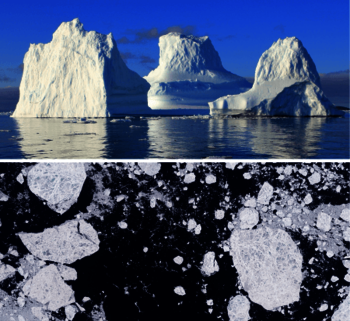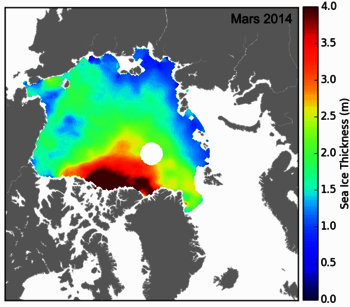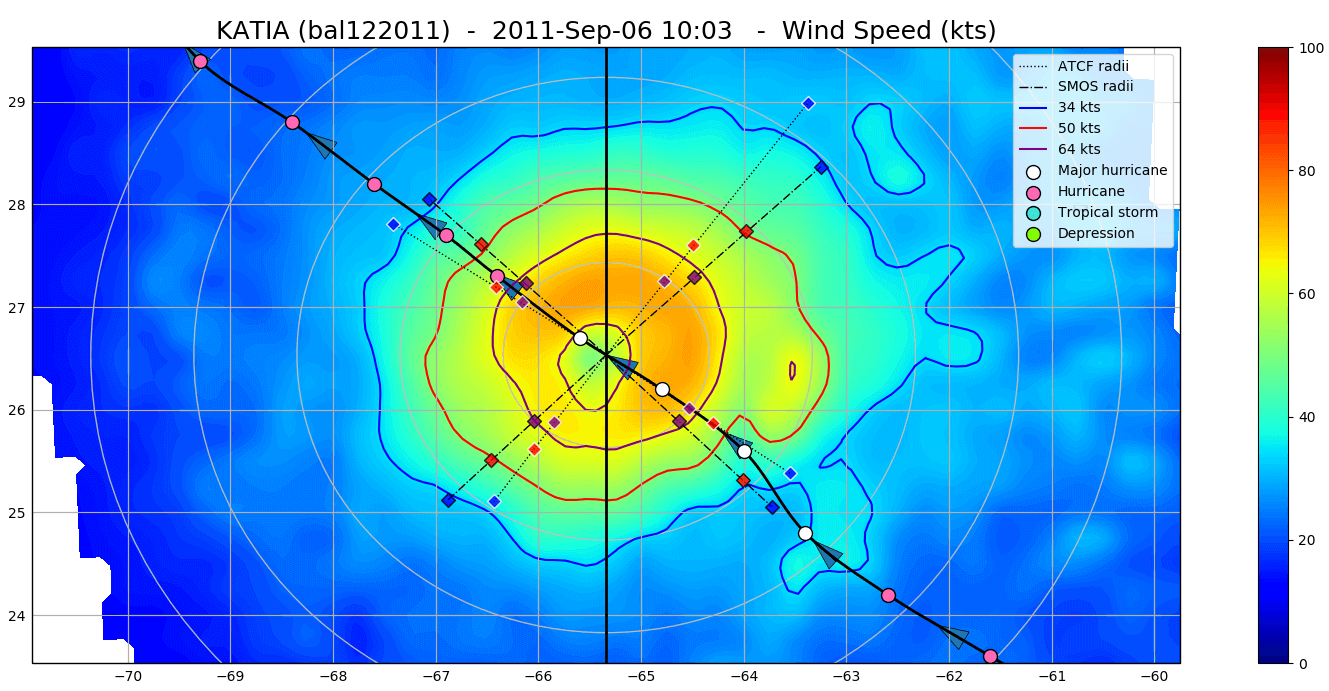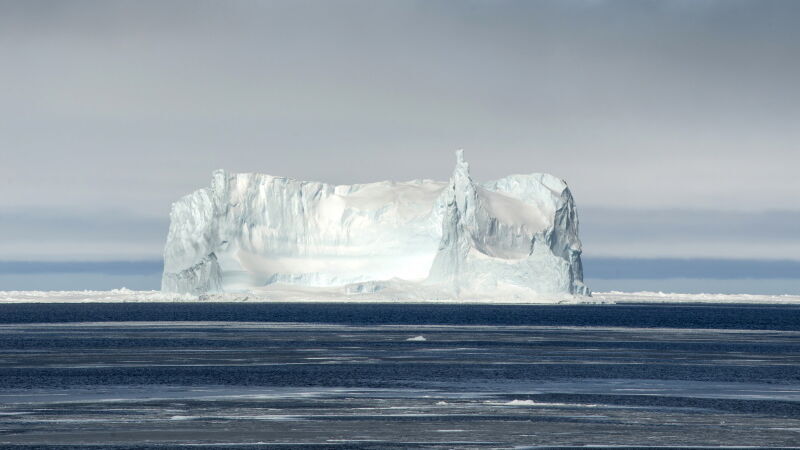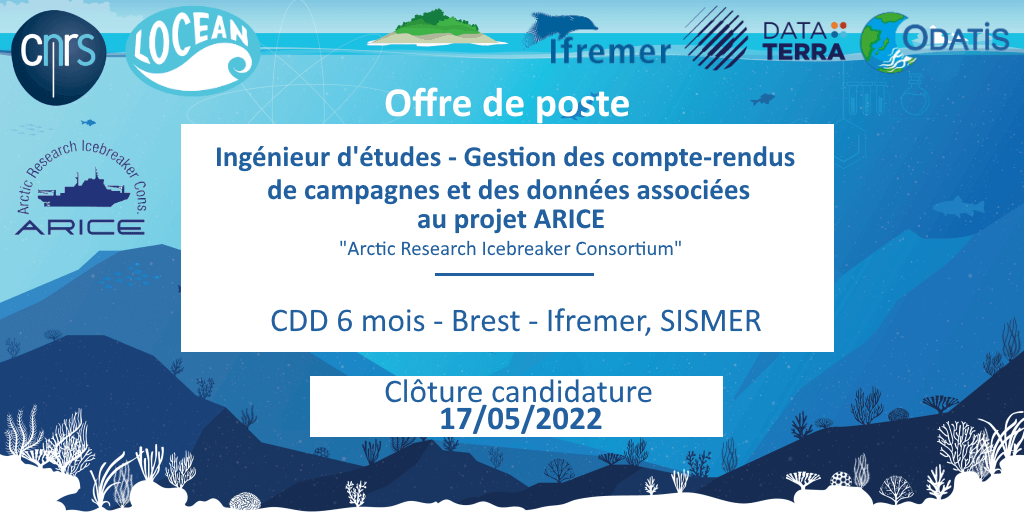Le satellite SMOS vient de fêter ses 15 années à mesurer trois composantes essentielles du cycle de l'eau : l'humidité des sols, la teneur en eau de…
Sea Ice
In the oceans, we differentiate sea ice (ice pack) formed from sea water (salt water) and icebergs, formed from inland waters (fresh water).
Sea ice forms when ocean water temperatures reach freezing point, about -1.8°C, depending on the salinity of the water. Sea ice grows both in size and thickness to form ice floes in late fall and winter. Multi-year ice, which does not melt from one season to the next, can reach a thickness of about 3 m.
This drifting ice sometimes collides, deforms and cracks. These cracked areas open up ice-free areas called leads and polynyas. Through these holes in the ice, which are darker in colour than the ice, or in other words, have a smaller albedo than on ice-covered areas, solar radiation reflects less. As a result, through these "holes" in the ice, the ocean absorbs more energy, which accelerates their warming. The melting of the ice pack does not bring water to the ocean and therefore does not contribute to the direct rise in its level. However, the increased melting of the ice increases the solar radiation absorbed at the ocean surface, which amplifies their warming.
Icebergs are formed from continental ice, which flows to the ocean as floating ice shelves. Blocks of ice break up (icebergs) from these platforms and leave the continent to drift with the currents and winds. The largest icebergs reaching up to several tens of kilometres can drift for several years on trajectories of several thousand kilometres.
Monitoring sea ice and melting continental ice are essential indicators for assessing the extent of climate change.
